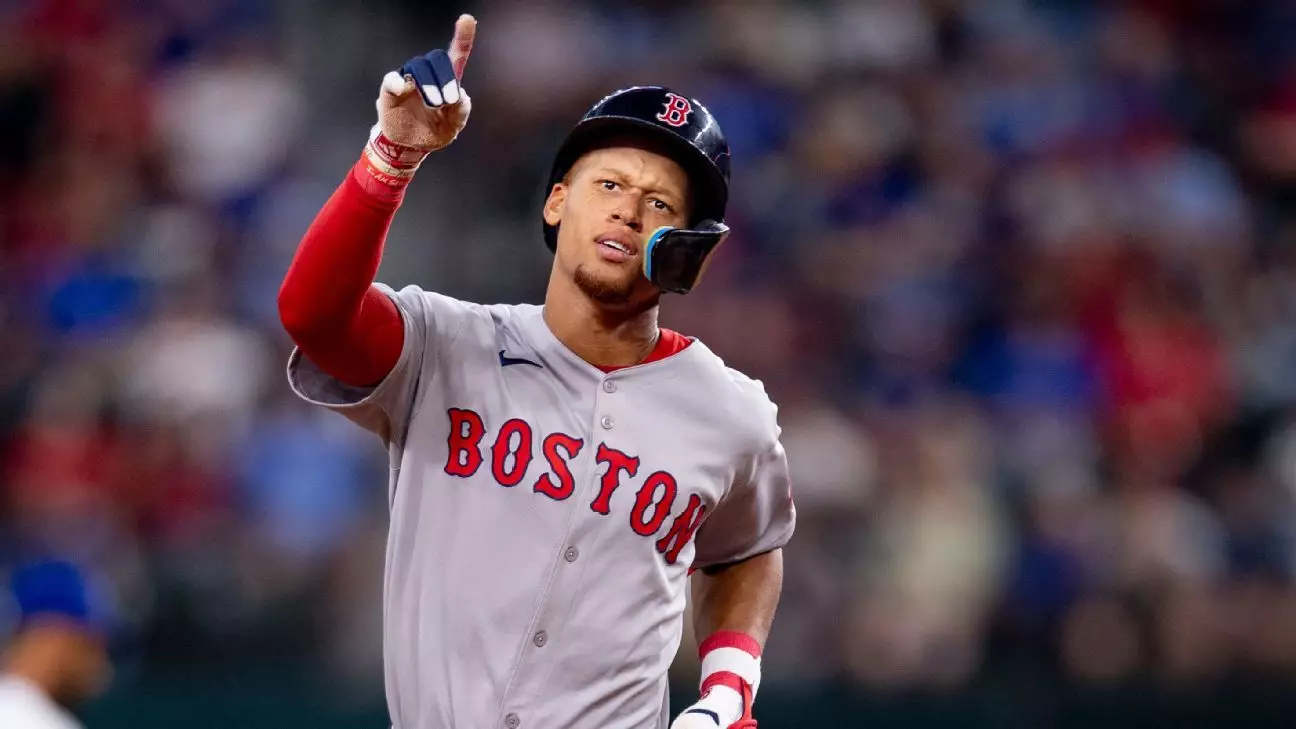The Boston Red Sox, a team steeped in a rich tapestry of baseball history, are embarking on an ambitious reconfiguration as they reassign rookie success story Kristian Campbell to Triple-A. This isn’t just a minor shift; it’s a strategic recalibration in light of both Campbell’s fluctuating performance and the anticipated return of outfielder Wilyer Abreu from injury. Campbell, though a shining star when he debuted, has become a discussion point about the very nature of talent recognition, development, and the harsh realities of competition in Major League Baseball (MLB).
Kristian Campbell’s early season was nothing short of electrifying. He stormed the league with an impressive record, showcasing a robust .301 batting average with excellent on-base and slugging percentages that won him the title of American League Rookie of the Month in April. However, the season took a steep turn for Campbell. As he transitioned from promising rookie to struggling second baseman, his numbers began to spiral downward. By May, he was hitting a dismal .159, raising questions about his capacity to handle the pressures of professional baseball. This presents a critical juncture not just for Campbell but also for the Red Sox’s approach to player management and development.
The Impact of Recent Trades on Team Dynamics
The decision to send Campbell down to Triple-A comes against the backdrop of a significant roster shake-up following the trade of superstar Rafael Devers to the San Francisco Giants. Such moves carry weight, resonating deeply within the locker room and influencing the way remaining players perceive their roles. The front office undoubtedly believes that integrating Abreu back into the fold, alongside the eventual return of Alex Bregman from injury, will fortify a lineup that, despite its fifth-place standing in the league in runs scored, has faced inconsistencies with younger players stepping into pivotal positions.
Campbell’s reassignment speaks volumes about the relentless pursuit of performance that defines the modern MLB. It reflects an understanding that potential alone does not secure a place on a major league roster; consistency and adaptability are paramount. This shift can serve as a learning experience for Campbell as he navigates the pressures of professional sports, allowing him to recalibrate in a less intense environment. The question remains whether the Red Sox can effectively balance nurturing their potential stars while also competing at a high level.
The Evolution of the Red Sox’s Outfield Strategy
As Wilyer Abreu returns, one cannot overlook the evolving dynamics of Boston’s outfield. Abreu, set to return after a short stint on the injured list, carries with him the hope that he can reignite a powerful presence in the lineup. His pre-injury performance, where he averaged .245 with notable power numbers, instills confidence that the separated elements of the lineup have the potential to coalesce into something formidable. He joins an outfield that already boasts Gold Glove candidate Ceddanne Rafaela, All-Star Jarren Duran, and rising prospect Roman Anthony. Each player brings unique skills to the field, creating a crowded yet competitive environment.
This influx of talent into the outfield could impose significant pressure on Campbell. His previous role may not only be challenged by the productivity of established players but also by the potential rise of prospects who are eager to carve out their niches in the league. The Red Sox are betting on a blend of experience and raw talent as they navigate the regular season, and the challenges faced by Campbell underscore the unpredictable nature of baseball.
A Call for Growth and Resolution
As the Red Sox make these intentional changes, they not only highlight the harsh realities of professional athlete transitions but also promote resilience and determination. Campbell’s story is just beginning, and while the immediate future in the minors may seem like a setback, it can also serve as a fertile ground for growth. The lessons learned during this period could ultimately equip him for a more enduring journey in the majors. His potential, as evidenced by his early performances and encouraging metrics, still looms large as a beacon of hope for future seasons.
Ultimately, the Red Sox’s strategy of sending Campbell down while reintegrating Abreu reflects a commitment to both immediate competitiveness and long-term player development. The path of a baseball player is fraught with uncertainty, but it is also filled with the potential for growth and redemption, making every decision at this level critical for the organization’s present and future aspirations.

